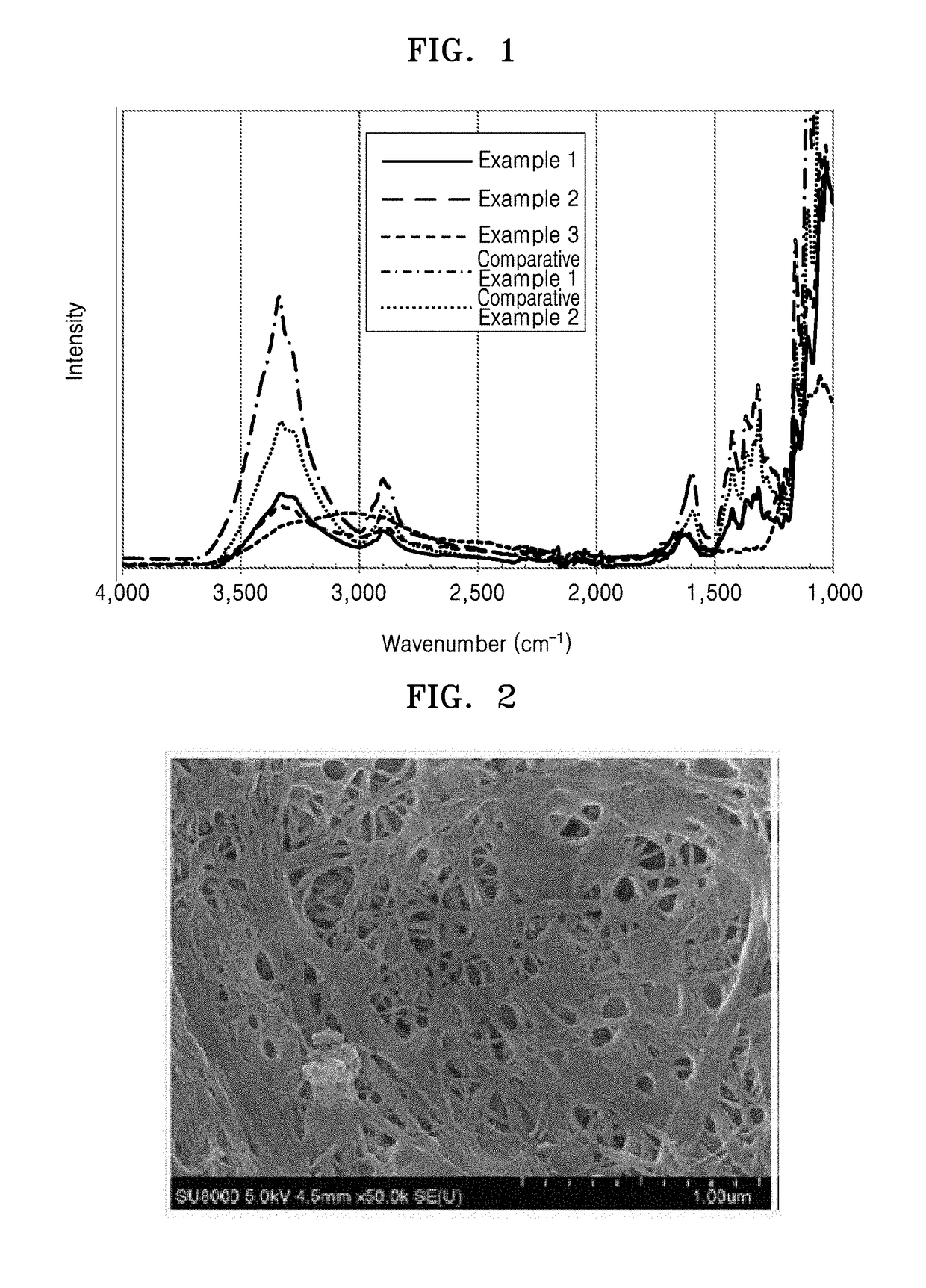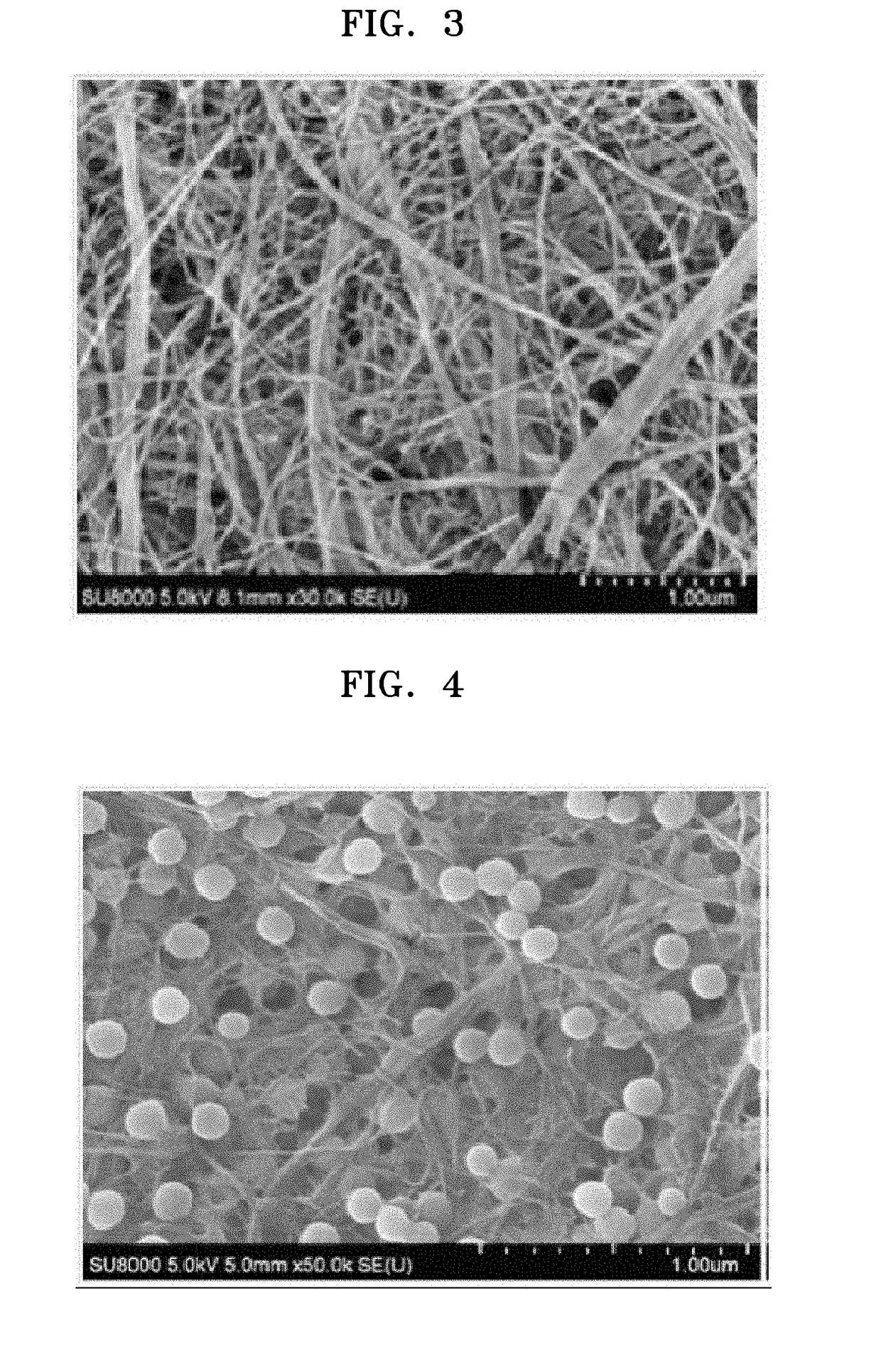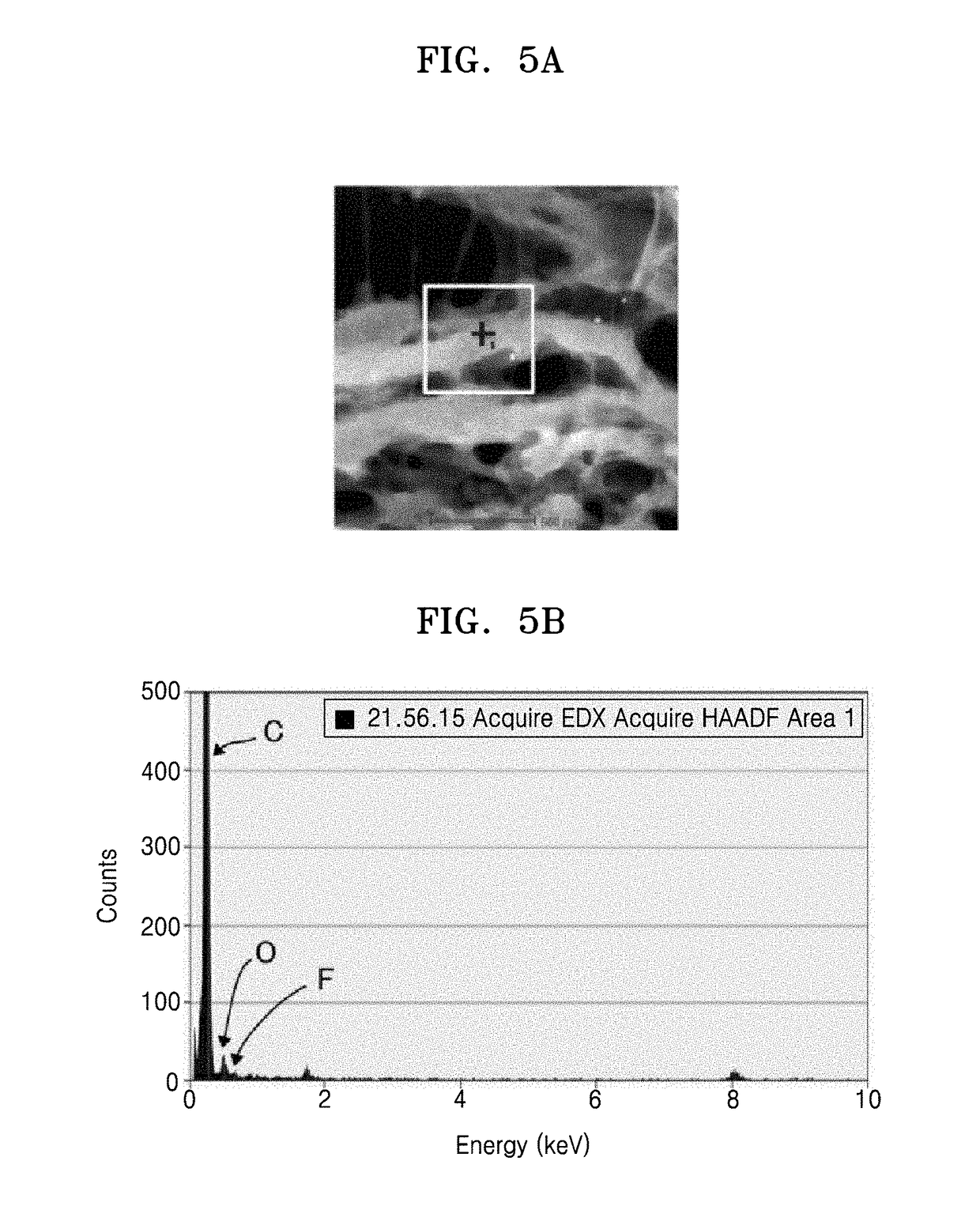Separator for nonaqueous electrolyte secondary battery
a secondary battery and nonaqueous electrolyte technology, applied in the direction of electrochemical generators, cell components, cell component details, etc., can solve the problems of inconvenient use of polyolefin separators, and low strength of cellulose nonwoven fabri
- Summary
- Abstract
- Description
- Claims
- Application Information
AI Technical Summary
Benefits of technology
Problems solved by technology
Method used
Image
Examples
example 1
[0150]Carboxylmethyl cellulose (manufactured by San Rose MAC5OOLC, Japanese Paper Manufacturing Co., Ltd.) and triethylene glycol butyl methyl ether (manufactured by Dongbang Chemical Co., Ltd.) were added as a binder resin and an aqueous hole-opening agent, respectively, to a water suspension containing 2 weight % of cellulose nanofibers (average fiber diameter=100 nm), and then, the mixed solution was stirred, to thereby prepare a casting solution. An amount of carboxylmethyl cellulose in the binder resin was about 1 part by weight based on 100 parts by weight of the cellulose nanofibers and an amount of the aqueous hole-opening agent was about 250 parts by weight based on 100 parts by weight of the cellulose nanofibers. After the casting solution was cast on a Petri dish, the Petri dish was placed on a hot plate heated to a temperature of 85° C. The solvent and triethylene glycol butyl methyl ether were evaporated from the Petri dish on the hot plate, to thereby form a nonwoven f...
example 2
[0153]A cross-linked nonwoven fabric was prepared in the same manner as in Example 1, except that about 0.13 parts by weight of Al2(SO4)3 was used as a cross-linking agent in preparing the solution containing the cross-linking agent.
[0154]The thickness of the cross-linked nonwoven fabric was about 18 μm, the Gurley permeability of the cross-linked nonwoven fabric was about 205.2 seconds / 100 mL, and the tensile strength of the cross-linked nonwoven fabric was about 304 kgf / cm2. With regard to a battery including the obtained cross-linked nonwoven fabric as a separator, the capacity retention rate of the battery measured at a constant voltage of about 4.4 V was about 76%.
example 3
[0155]A cross-linked nonwoven fabric was prepared in the same manner as in Example 1, except that about 0.21 parts by weight of Al2(SO4)3 was used as a cross-linking agent in preparing the solution containing the cross-linking agent.
[0156]The thickness of the cross-linked nonwoven fabric was about 15 μm, the Gurley permeability of the cross-linked nonwoven fabric was about 232.4 seconds / 100 mL, and the tensile strength of the cross-linked nonwoven fabric was about 368 kgf / cm2. With regard to a battery using the obtained cross-linked nonwoven fabric as a separator, the capacity retention rate of the battery measured at a constant voltage of about 4.4 V was about 71%.
PUM
| Property | Measurement | Unit |
|---|---|---|
| Percent by mass | aaaaa | aaaaa |
| Percent by mass | aaaaa | aaaaa |
| Percent by mass | aaaaa | aaaaa |
Abstract
Description
Claims
Application Information
 Login to View More
Login to View More - R&D
- Intellectual Property
- Life Sciences
- Materials
- Tech Scout
- Unparalleled Data Quality
- Higher Quality Content
- 60% Fewer Hallucinations
Browse by: Latest US Patents, China's latest patents, Technical Efficacy Thesaurus, Application Domain, Technology Topic, Popular Technical Reports.
© 2025 PatSnap. All rights reserved.Legal|Privacy policy|Modern Slavery Act Transparency Statement|Sitemap|About US| Contact US: help@patsnap.com



